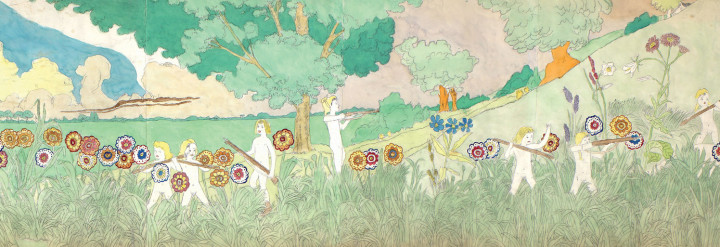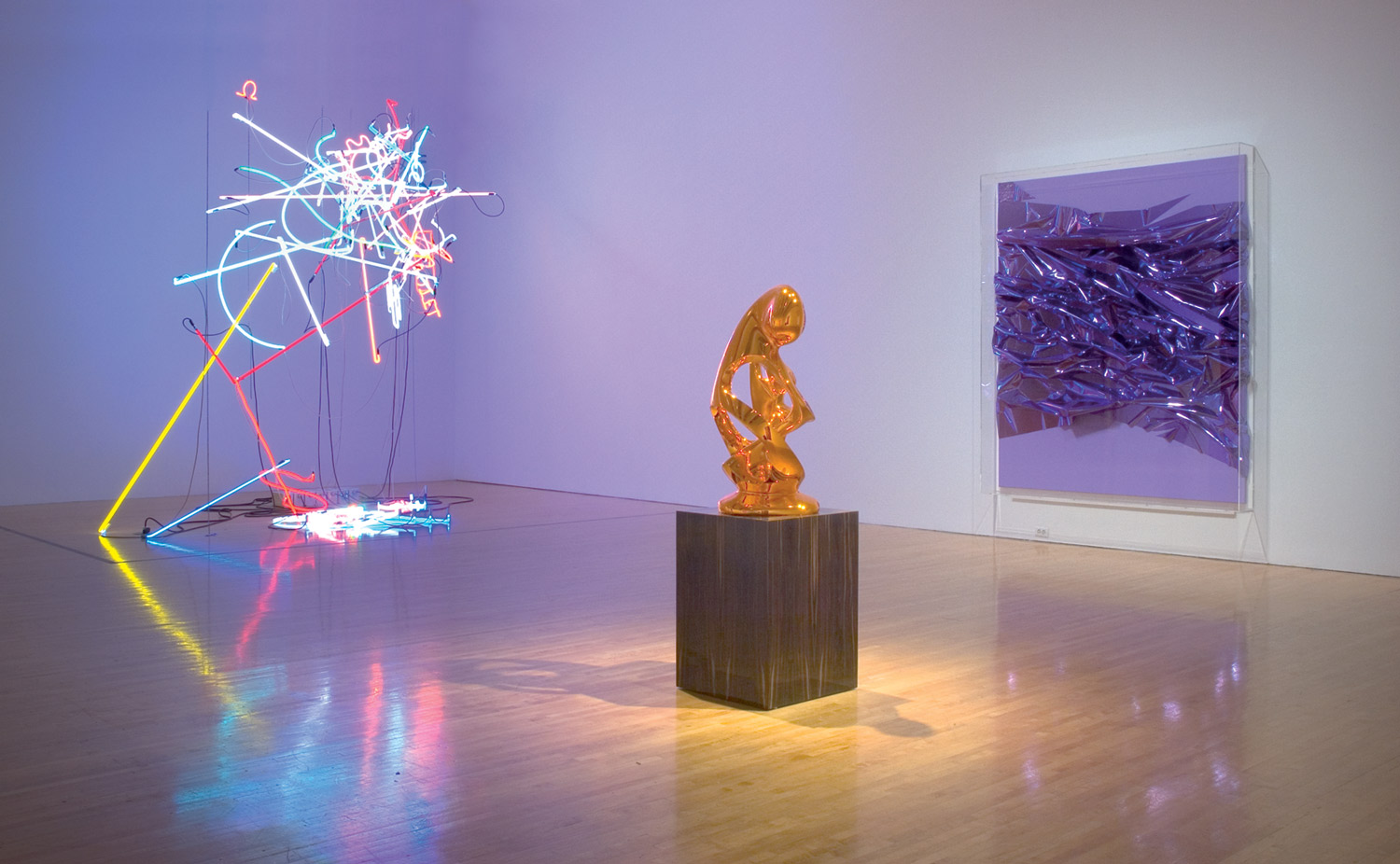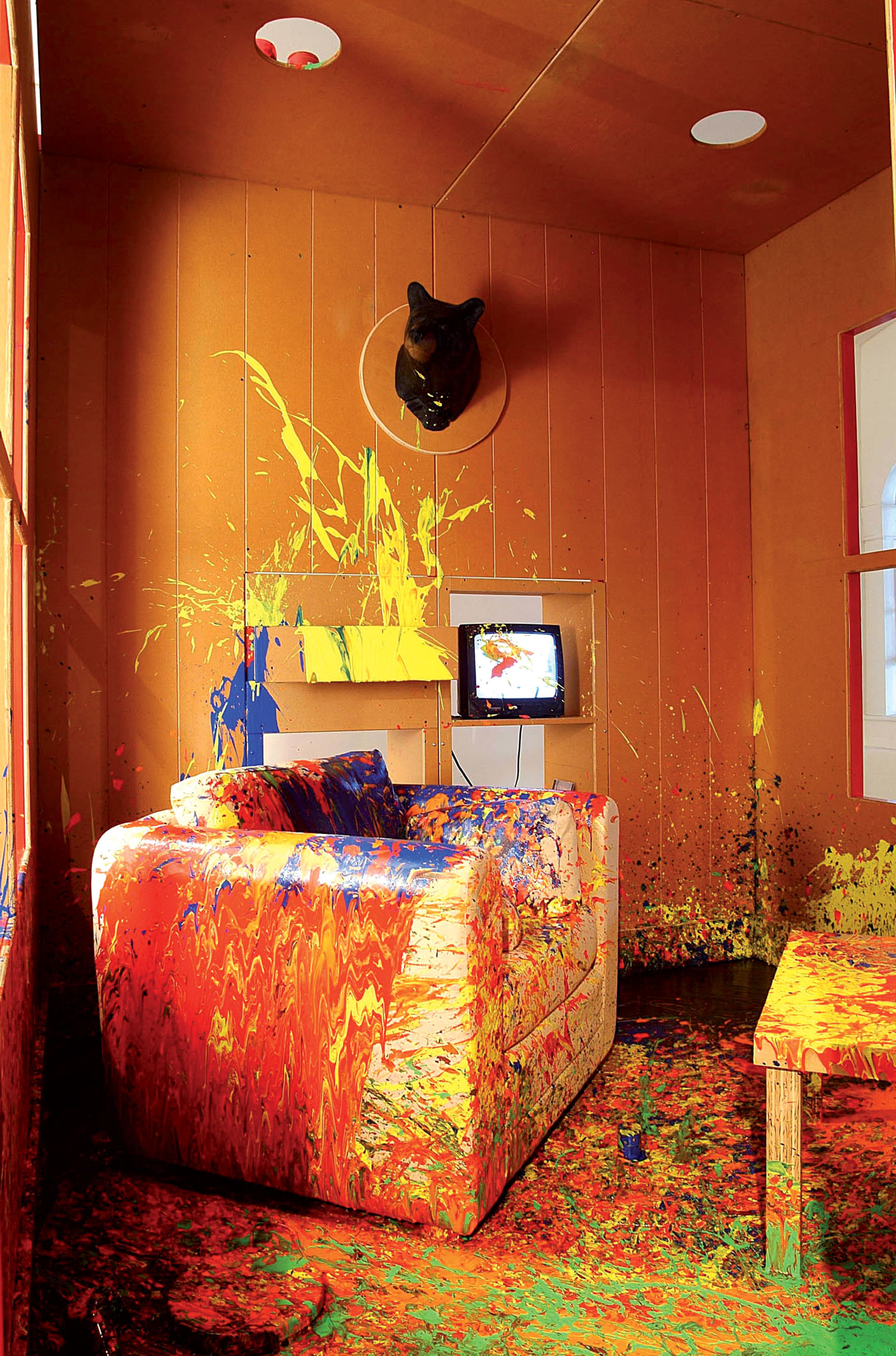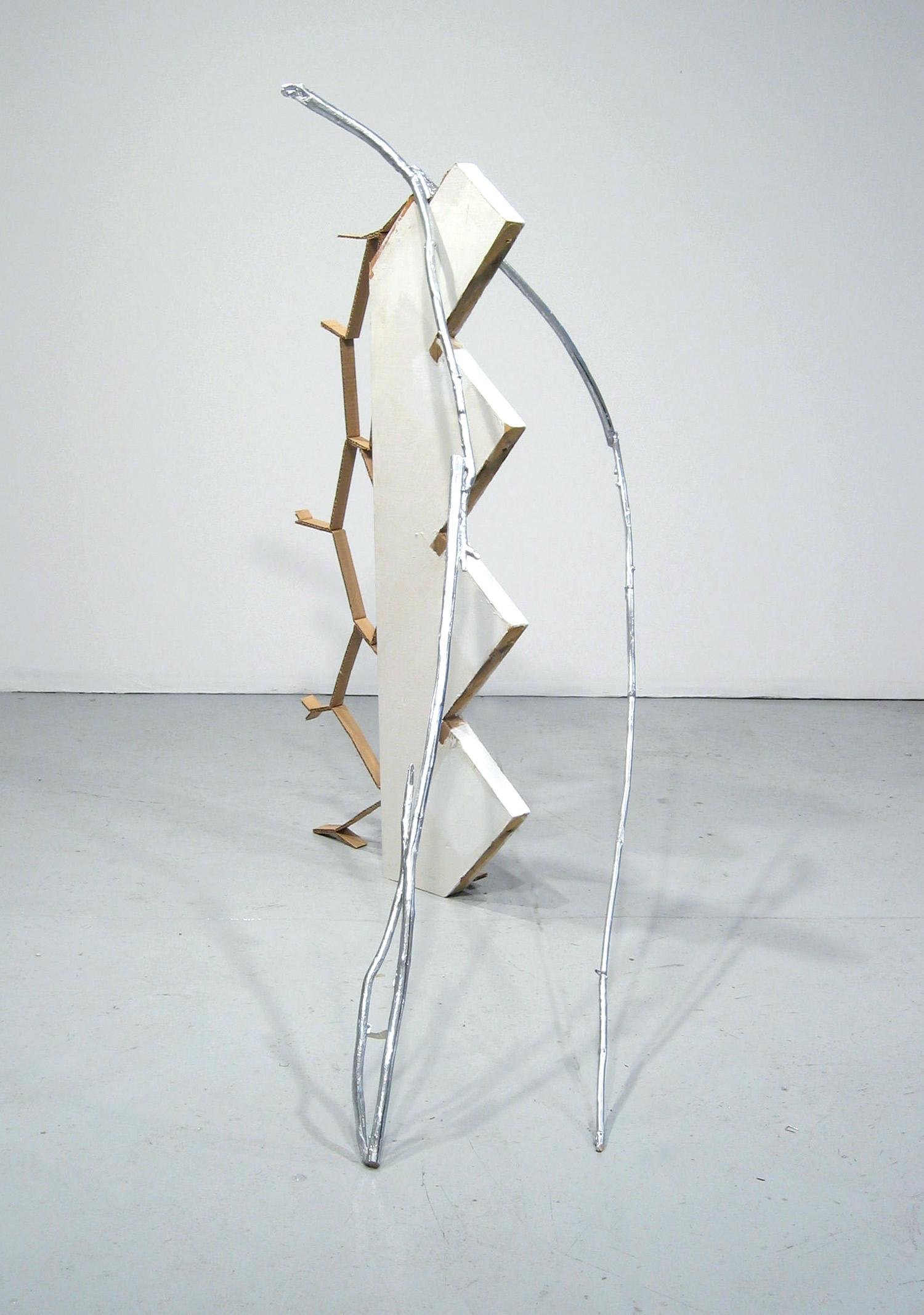
Raw art that exists in extremis, at the very edges of culture and beyond — this could be one definition of Outsider art, or Art Brut. A few solitary, untutored visionaries, often harrowingly marginalized figures, create bizarre works of tremendous beauty and primordial pattern-making — often purely for themselves, with no audience in mind. Only in recent decades has this kind of art come to the fore. The 19th-century critical eye dismissed such work as mad, morbid and artless. The early 20th-century avant-garde was more receptive.
The best Outsider art articulates that which can usually only be accessed through extreme intuitive, mystical or hallucinogenic experience. The painter Jean Dubuffet, who coined the term Art Brut in 1945, initially began collecting art by psychiatric patients, but as his collection grew, he resisted any condescending tendency simply to medicalize such art, refusing to view it symptomatically or solely in terms of mental illness.
The exhibition “Inner Worlds Outside,” — realized by London’s Whitechapel Gallery in collaboration with Madrid’s Fundación La Caixa and Dublin’s Irish Museum of Modern Art — juxtaposes 20th-century Outsider art alongside works by the modernist avant-garde and more recent mainstream artists. Outstanding Outsiders here include Aloïse Corbaz (discovered by Dubuffet in a Swiss mental asylum) and Adolf Wölfli (who created a vast body of fantastically intricate drawings in a Swiss asylum); the Frenchman Augustin Lesage (whose shimmering, symmetrical abstract compositions are weirdly idiosyncratic yet universal in scope); Madge Gill (who prolifically drew endless, chic, serene self-portrait heads within spiraling galaxies and kinetic, geometric of interior spaces) and Scottie Wilson, both from Britain; and Martin Ramirez and Henry Darger (a Chicago recluse, whose massive work of beautiful yet highly disturbing hallucinatory fantasies was discovered only after his death) from the United States.
The attention now given to Outsider art — with many books on the subject, the annual Outsider Art Fair in New York, fine collections open to the public, like that of Anthony Petullo in Milwaukee, the American Visionary Art Museum in Baltimore, the Musgrave Kinley Outsider Art Collection at the Irish Museum of Modern Art in Dublin, the ABCD Collection d’Art Brut in Paris, and the publication of the magazine Raw Vision since 1989 — means that any good Outsiders now emerge from critical isolation at an earlier stage. The growing commercial market for this kind of art encourages some to ape its offbeat appearance and get away with artistic murder, so to speak. Yet a few, rare Outsiders continue to create mesmerizing universes. Some of these artists, because of autism or other psychological conditions, as well as social privation, are more or less oblivious to art trends around them; others, more well-read or socially aware, still remain obsessively rooted in their own original inscapes.

Albert Louden (b.1943), originally a van driver in East London, and Shafique Uddin (b.1962 in a Bangladeshi village), who also lives in London’s East End. Both were discovered in the early 1980s by Victor Musgrave, an authority on Outsider art. While drifting from one manual job to another, Louden started drawing and reading poetry. It was Musgrave’s advice — “Just do it and accept it” — which freed him from agonizing about where his art came from. “I’m not a storyteller,” he says. “Line grows out of line. Also it grows more aggressive. Figures are assassinated, this is exciting and tormenting as well. I always feed on human beings.” Indeed, his work feeds on people endlessly contracting, expanding and warping in form — like beings miraculously transfigured in fairy tales or in Alice in Wonderland — within rooms at once capacious and claustrophobic and in looming city streets, whose countless windows sometimes resemble reiterated eyes. Louden’s eerily absurd figures appear awestruck and starkly vulnerable.
To watch Shafique Uddin at work is both a remarkable and refreshingly matter-of-fact experience. Without any preparatory sketches, countless staccato brushstrokes are dynamically flecked onto large sheets of paper. Birds, tigers, dogs, buildings and trees, as well as melodious English landscapes and aggressively warring and vehemently embracing people, emerge with an amazing fluency. Uddin’s perspectives are simultaneously those of the child and of the assured creator who intuitively knows precisely how to evoke his vision. He paints both his current life in Britain and memories of his native Bangladeshi village — which he periodically revisits. Through myriads of marked layers, an inner phosphorescence invariably shines out — even in Uddin’s darkest paintings.
Damian Le Bas (b.1963) studied textile design at London’s Royal College of Art, but was soon put on probation by his tutors who were mystified by the fact that all he wanted to portray were “hundreds of chalk pastels of horses with human eyes.” Hope was forthcoming when his art found a home within the Musgrave Kinley Collection. Like most Outsiders, Le Bas says, “I haven’t a clue before I start a work.” His paintings, pencil drawings and occasional painted objects (such as a shoeshine box in which every possible surface — including tins and brushes — is deliriously covered with intricately interwoven human figures, including countless faces within faces) evoke a personal mythology rooted partly in a difficult childhood and his Huguenot and Irish Traveller background as well as his wife Delaine Le Bas’ Romany history. His works’ chief characteristics — interminably proliferating human figures and countenances — are far from being chaotic; they possess a liberating anarchic impulse that reveals deeply hidden psychic structures.

The Dutch painter Roy Wenzel’s early years were spent in refugee camps in Holland, where he was born in 1959 into an immigrant family from Indonesia. From babyhood he has suffered from severe eczema, a condition that troubles him to this day. Early on it became clear that he was autistic. His work retains childlike perspectives along with the most intuitively sophisticated way of sharply scrutinizing his experience of the world: a train hurtling like a firebrand through a landscape, figures in rooms and streets, a hallucinatorily extensive smile, impressive stiletto heels. Noteworthy is the way he layers and over-layers his pictures, so that earlier lines and imagery are nearly obliterated, creating richly subtle, complex atmospheres.
The painter Herbert Liesenberg, born in Germany in 1930 and institutionalized for many years, similarly unites childlike perceptiveness with rigor in observing and representing the world. Cars, buses, people, birds, buildings and abstract shapes are presented in at once deliberately orderly yet wonderfully spontaneous frieze-like formations, without recessive perspective, against an empty white paper backdrop. Though no obvious demonstrable narrative runs through his pictures, his juxtaposed imagery has an immaculate imaginative coherency of its own.
Born in Germany towards the end of the Second World War, Henryk Zarski has also spent most of his life in a mental institution, in Poland. For years, his main activities were simple menial tasks, and it was only around 1989 that he began to draw and paint, at first inspired by images in newspapers and postcards. It was not long however before he was immersed in his own mature vision of paradisiacal, church-strewn landscapes peopled by what appear to be mythical heroes and heroines with huge, transfixing eyes — perhaps just ordinary Polish villagers.

Outsider art opens alternative doors of perception. The subject matter of the New York-based painter Ionel Talpazan is flying saucers that he fervently believes hold the redemptive key for humanity’s future. In his hands, the flying saucer has become a modern mandala, a cosmic icon — in some ways, one not so far removed from that in the popular post-war imagination. Born in a Romanian village in 1955, he had an unhappy childhood with abusive foster parents. At the age of seven, miserable and shivering in a ditch, he experienced a benevolent blue light overhead, and, from the age of twelve, felt compelled to make drawings of flying saucers. He escaped from Romania in 1987, swimming across the Danube at night. His taut diagrammatic drawings and dynamic, vibrantly concentrated paintings of these aerial machines (with accompanying scripts apparently as technological blueprints), ineffably inspire us.
Born in 1962 in Cincinnati, Ohio, George Widener is enthralled by the poetry of birthdates, license-plate numbers and anniversaries of forgotten historical disasters. This sounds odd, but in terms of his own highly coherent conversation and his artworks, such fascination is both credible and enriching. After years of struggle, travel, homelessness and periods in mental institutions, Widener was finally diagnosed with Asperger’s Syndrome in his early thirties. His mind is happily hyperactive, able to make complex computations almost instantaneously. The titles of some of his pictures — Blue Monday, Ash Wednesday, Bloody Sunday — unite poetic vernacular with details of actual awful events. On stained paper napkins pasted together, hisAA stringently drawn diagram of the hull of the Titanic is accompanied by a scrawled inventory of such haunting particularities as “Food aboard Titanic… 800 bundles asparagus… 600 gal. condensed milk…” and the ultimate reckoning: “1523+ souls lost, 306 bodies recovered.” Widener’s visions of future city panoramas — looking very much like cities of past and present — on particular days (as in his picture of Megalopolis) are succinctly wrought in color and design, yet similarly haunting and apocalyptic.
Outsider artists of different kinds seem to possess a consummate self-assurance along with an absence of conventional premeditation. They appear to have a sure, uncensored link with their own unconscious mind. For them, the most ordinary artistic expression takes on the exploratory air of extreme openness and ultimate revelation.





